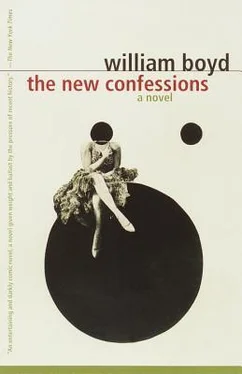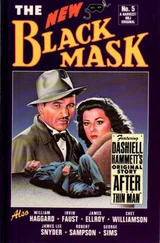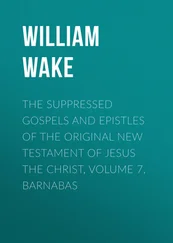“Oh yes? What?”
“A film about Billy the Kid. But listen, in color.”
I drove down to San Diego to see Ramón Dusenberry. Since he had been best man at my wedding we had become quite close friends. We would meet up from time to time when he was in Los Angeles on business. He was a great admirer of my Westerns. “Anytime you’re tired of movies, you can have your old job back,” he would joke. I liked Ramón and not just for his gratifying enthusiasm. He was older than I and I had unilaterally appointed him as surrogate older brother, now that Thompson had abandoned the role. I asked him what to do about finding Doon. He said he had a friend in the San Diego police force who might be able to help.
We sat in Ramón’s yacht club overlooking the marina. It was a clear day, the sky empty of clouds. A flying boat — a Catalina — flew past at a low level on the way to the naval base. Over in Europe the Red Army captured Kharkov on their advance to the Dnieper. The RAF bombed Cologne. The USAF bombed St.-Nazaire.
“So what’s the next movie?” Ramón asked.
“What? Oh, Billy the Kid,” I said.
“My God! Well, you’ve got to meet Garfield Barry.”
“I have?”
“Yes, old Garfield knew him, for God’s sake.”
After lunch Ramón drove me up the coast to Cardiff-by-the-Sea, to a retirement home called Bella Vista across the coast highway from the public beach. It was a series of attenuated bungalows in the English style linked by covered walkways. Here and there were palms and ancient pepper trees with wooden benches set beneath them. We found Garfield Barry sitting outside in a wheelchair rather too close to a lawn sprinkler. The back of his head and shoulders were quite damp from the spray. We wheeled him out of range.
Barry was a lively old geezer but physically incapacitated by a recent stroke. He had a big nose and bright watery eyes; an uneven skull beneath a thin floss of white hair. One of Ramón’s newspapers had run a long interview with him on his eighty-fourth birthday a couple of months previously, called “The Last Man Who Knew Billy the Kid.” (This was quite true, I believe. There were a couple of old ladies still living who remembered the Kid, but Barry was definitely the last male.)
Barry had been born in 1858. His father kept a saloon in Fort Sumner, New Mexico. Barry himself had been postmaster there for forty years. In 1881, the year the Kid died there, Barry had been twenty-two, a year older than the desperado. It was strange talking to the old man. I realized that Billy the Kid himself could have lived as long, had circumstances been different. I felt an odd melancholy. Here I was, forty-four, born eighteen years after Pat Garrett killed the Kid, talking to their contemporary. Meanwhile the sun shone on San Diego and the Red Army pressed on towards the Dnieper. I felt a swooning disorientation of space and time, the present and the past. The objective and subjective worlds I occupied seemed to swirl and dance round me. I forced myself to concentrate on the old man.
“What was he like?” I asked. “Billy the Kid?”
“Well, for a start his name wasn’t Billy the Kid, wasn’t even William Bonney. It was Henry McCarty, and I would say …” The old man paused for breath. A breeze stirred his fine hair and the branches of the pepper tree above him. I thought suddenly of old Duric Lodokian in his Berlin deathbed.
“… I would say he was one of the meanest, shortassed, buck-teethed, foxy little fuckers I’ve ever met.”
With the help of Barry’s reminiscences I rewrote Eddie’s rotten script. Out went the American Robin Hood and in came something more sinister. The way I told it, my Henry McCarty was an evil runt who shot charming William Bonney and stole his name. Sheriff Pat Garrett, immensely tall (six feet four inches, according to Barry), became a moralistic, lugubrious avenging angel. I took plenty of liberties with the story, but the facts were accurate. It was the eighteenth Billy the Kid film, but the first one to portray him as he really had been.
“He wasn’t even left-handed,” Garfield Barry told me. We were examining the only known photograph of the Kid, where he stands with a rifle by his side. “Some fool reversed the picture first time it was used and now everybody thinks he was a left-handed gun,” Barry said, chuckled and coughed.
I looked closely at the photo. “My God. He’s got three-inch heels on his boots,” I said.
“Told you he was a stunted little bastard.”
I think that was one of my most brilliant ideas in the film. Sonny Pyle, an astonishing young actor (whose tragic death in 1944 was a huge loss to the cinema), played the Kid throughout the film in four-inch Cuban heels. It had the most bizarre effect on every posture and movement. Pyle was thin-faced with staring eyes and we gave him a plate of false teeth so we could get the famous jackrabbit smile. Many people have subsequently analyzed his performance without being able to say precisely why it is so mesmerizing. Quite simply, it is the high heels. My Billy the Kid teeters; he has to go upstairs carefully, he jumps down from his horse with uncharacteristic caution. He walks with a curious bent-kneed gait. For the first time since The Divorce I worked with some enthusiasm on a motion picture.
I think this is what Eddie responded to, I had little trouble in convincing him that we had to shoot the film in New Mexico. The budget doubled, then trebled.
“Yes, Johnny,” he said patiently. “I know. Location authenticity. I’ve heard it all before, remember?”
Towards the end of the year I flew down to Albuquerque to do a location scout. We based ourselves in Roswell and motored out across the Pecos flats searching for small villages that could stand in for nineteenth-century Lincoln and Fort Sumner. For the first time too I became excited about the possibilities of color. Around me were the red and purple mountains, the pink and blue adobe houses, the hay meadows and the rolling alfalfa pastures, the canyon walls stippled with piñon and oak bush. This would be the backdrop for my morality play in which Sheriff Pat Garrett was the hero and the Kid the villain.
I was going to call the film Alias Billy the Kid , but I decided in the end that I would use the name the cowboys gave to their six-guns, The Equalizer .
I am proud of The Equalizer . It doesn’t rank with The Confessions: Part I but it was made — fast — with a kind of angry fervor that allowed me to invest a tired genre with a rare intensity. We filmed in the spring of ’44. Padika was Lincoln; Little Black was Fort Sumner. There was still snow on the Capitan Mountains and I kept them in the background of every exterior shot possible. Cold and remote, they are a continual presence in the film. We filmed also in a fruit ranch near the Ruidoso River. Acres of peach, plum, apple and pear orchards were in bloom. Their blossoms hung like a low-lying pink and white smoke across the landscape. (You will remember that scene when Pat Garrett — Nash McLure — stalks the Kid through the candied pink of the peach orchard.) I used color like a painter: I literally daubed it on. It was my first color film and I had every tone I could heightened. I repainted the adobe houses in Padika. The Kid smoked cigarettes wrapped in bright yellow paper. I ran blue dye down canyon streams. And everything in the landscape had a vernal freshness — the chaparral thickets, the cottonwoods, the bunchgrass and greasewood. The whole film glowed.
Where did this urgency and angry fervor I referred to come from? Why, I hear you ask, was it not present in Gun Justice, Four Guns for Texas and Stampede!? The answer lies in the fact that I ran across Leo Druce a week before I started filming — the encounter acted as a powerful goad.
Читать дальше












